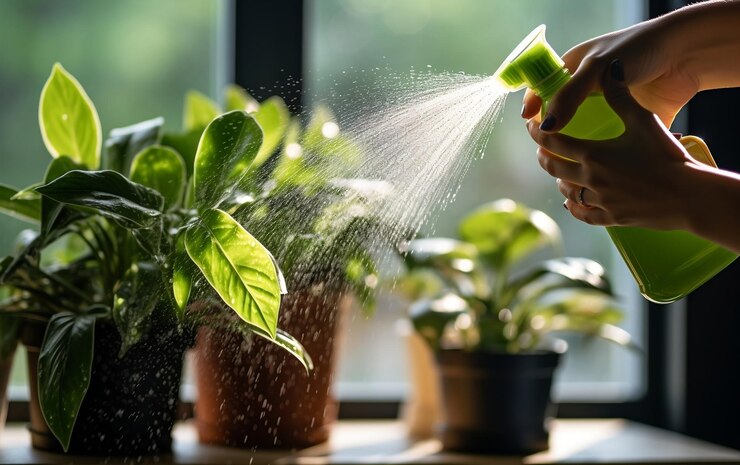Plant, as the temperatures rise and the sun beats down, your garden might start to show signs of stress. However, with the right care and attention, you can keep your plants thriving through the summer months. In this comprehensive guide, we’ll explore everything you need to know to maintain your plants during the heat of summer, from watering and soil management to pest control and plant selection.
Understanding Summer Plant Needs:
Before diving into specific care techniques, it’s important to understand the unique needs of plants during the summer season. In general, plants require more water in hot weather to compensate for increased evaporation. However, overwatering can be just as harmful as underwatering, so finding the right balance is key. Additionally, the intense sunlight of summer can lead to sunburn and heat stress in some plants, while others thrive in the heat.
Watering:
Proper watering is perhaps the most crucial aspect of summer plant care. Water deeply and less frequently to encourage plants to develop deep root systems. Early morning or late evening is the best time to water, as it minimizes evaporation and allows plants to absorb moisture more effectively. Mulching can also help retain soil moisture and regulate soil temperature.

Soil Management:
Healthy soil is essential for plant growth, especially during the summer months. Ensure your soil is well-draining to prevent waterlogging, which can lead to root rot. Regularly amend the soil with organic matter to improve its structure and fertility. Consider using compost or mulch to add nutrients and enhance moisture retention.
Sun Protection:
Some plants are more sensitive to intense sunlight than others. Provide shade or use shade cloth to protect delicate plants from excessive heat and sunburn. Additionally, strategic placement of taller plants can create natural shade for those that are more sun-sensitive.
Fertilization:
During the summer, plants are actively growing and may benefit from regular fertilization. However, be cautious not to over-fertilize, as this can lead to nutrient imbalances and burn the plant’s roots. Use a balanced fertilizer or organic alternatives, and follow the recommended application rates.
Pest and Disease Management:
The warm, humid conditions of summer can attract pests and promote the spread of diseases. Inspect your plants regularly for signs of infestation or disease, such as yellowing leaves, wilting, or unusual spots. Practice good garden hygiene by removing any dead or diseased plant material promptly. Consider using natural pest control methods, such as beneficial insects or homemade remedies, to minimize chemical exposure.

Plant Selection:
Choosing the right plants for your garden can make summer maintenance much easier. Opt for drought-tolerant varieties that can withstand hot, dry conditions with minimal water. Native plants are often well-adapted to local climates and require less maintenance once established. Consider incorporating a mix of annuals, perennials, and succulents to add variety and resilience to your garden.
Container Gardening:
Container plants have unique needs during the summer, as they can dry out more quickly than plants in the ground. Use large containers with drainage holes to prevent waterlogging, and choose lightweight, breathable materials to avoid overheating the roots. Water container plants more frequently than those in the ground, and consider using self-watering containers or drip irrigation systems for added convenience.
Conclusion:
With the right care and attention, you can keep your plant thriving throughout the summer months. By understanding their needs and implementing appropriate maintenance techniques, you can enjoy a lush and vibrant garden even in the hottest of weather. Whether you’re a seasoned gardener or just starting out, following the tips outlined in this guide will help you create a beautiful and resilient garden that can withstand the challenges of summer.

